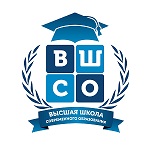НЕЙРОСЕТЕВОЙ МАШИННЫЙ ПЕРЕВОД В ОБУЧЕНИИ ИНОСТРАННОМУ ЯЗЫКУ В ТЕХНИЧЕСКОМ ВУЗЕ
Аннотация
Обоснование. Массовое использование обучающимися технических вузов сервисов нейросетевого машинного перевода при изучении иностранных языков влечет за собой необходимость изменения содержания рабочих программ и инструментария преподавания. Такая перспектива вызывает неоднозначную реакцию педагогов, что актуализирует обозначенную проблему в условиях цифровой трансформации высшего образования.
Цель. Авторы ставят целью представить результаты теоретико-эмпирического изучения отношения участников процесса обучения иностранному языку к массовому внедрению нейросетевых машинных переводчиков.
Материалы и методы. Материалы к настоящей статье были получены методом анкетирования, которое проводилось среди преподавателей и обучающихся технических вузов г. Новосибирска в 2024 г. Для более глубокого понимания отношения респондентов к внедрению сервисов нейросетевого машинного перевода в процесс обучения проводились ретроспективные беседы с обучающимися и полуформализованных интервью с преподавателями кафедр иностранных языков.
Результаты. Полученные данные свидетельствуют о преимущественно положительном отношении преподавателей и обучающихся новосибирских технических вузов к внедрению сервисов нейросетевого машинного перевода в процесс обучения иностранным языкам. Несмотря на тенденцию использовать такие сервисы для перевода больших фрагментов собственных текстов, многие обучающиеся ориентированы на анализ качества и редактирование получаемых результатов. Преподаватели, в свою очередь, отмечают, что нейросетевые машинные переводчики не решают проблему лингвистических затруднений, особенно при переводе отраслевых текстов. Вместе с тем они не видят причин запрещать обучающимся обращаться к сервисам нейросетевого машинного перевода в аудиторной и внеаудиторной деятельности. Также преподаватели подчеркивают, что использованию этих инструментов необходимо обучать специально. Учитывая мнения респондентов, авторы предлагают включить в рабочие программы отдельный модуль, посвященный корректному использованию сервисов нейросетевого машинного перевода, что будет способствовать развитию критического мышления обучающихся при решении учебных, профессиональных и исследовательских задач.
Скачивания
Литература
Список литературы
Аввакумова Е.А. Морфематические основания интуитивной орфографии русского языка: На материале эксперимента с детьми 6-7 лет: дисс. ... канд. филол. наук : 10.02.01. Кемерово, 2002. 171 с.
Волегжанина И.С., Литовка О.Н. Влияние интеллектуального поля отрасли на становление и развитие профессиональной компетентности будущего инженера // Инновации в образовании. 2023. № 1. С. 15-23.
Карасик В.И. Языковой круг: личность, концепты, дискурс. Москва: Гнозис, 2004. 389 с.
Степанова В.В. О типах отраслевого профессионального дискурса // Известия Гомельского государственного университета имени Ф. Скорины. 2019. № 1 (112). С. 137-140.
American Council on the Teaching of Foreign Languages (ACTFL) & The Partnership for 21st Century Skills. 21st Century Skills Map. 2011. URL: https://www.actfl.org/sites/default/files/pdfs/21stCenturySkillsMap/p21_worldlanguagesmap.pdf (дата обращения: 27.07.2024).
Briggs N. Neural machine translation tools in the language learning classroom: Students’ use, perceptions, and analyses // The JALT CALL Journal. 2018. № 14(1). С. 2-24. https://doi.org/10.29140/jaltcall.v14n1.221
Hellmich E.A. Machine translation in foreign language writing: Student use to guide pedagogical practice // Alsic. 2021. Vol. 24, № 1. https://doi.org/10.4000/alsic.5705
Henshaw F. Online translators in language classes: Pedagogical and practical considerations // The FLTMAG, IALLT's free language technology magazine. 2020, June 15. https://www.doi.org/10.69732/SFBF9402
Impact of the google translate machine translation system on the quality of training student translators / M. Borodina, T. Golubeva, S. Shumakova, T. Bessonova et al. // Webology. 2021. Vol. 18, Special Issue on Current Trends in Management and Information Technology. Р. 68-78. https://www.doi.org/10.14704/WEB/V18SI05/WEB18214
Karapetyan M. Teaching languages in the digital age: incorporating machine translation // Translation studies: theory аnd practice. 2023. Vol. 3, Is. 2(6). P. 58-69. https://doi.org/10.46991/TSTP/2023.3.2.058
Lee S.M. The effectiveness of machine translation in foreign language education: a systematic review and meta-analysis // Computer Assisted Language Learning. 2021. № 36(1-2). Р. 103-125. https://doi.org/10.1080/09588221.2021.1901745
Tang Q. Research on the development trend of teaching Chinese as a second language in the age of Artificial Intelligence // Proceedings of the 2nd International Conference on Literature, Art and Human Development (ICLAHD 2020). Atlantis Press, 2020, P. 706-708. https://doi.org/10.2991/assehr.k.201215.531
Tavares C., Tallone L., Oliveira L., Ribeiro S. The challenges of teaching and assessing technical translation in an era of neural machine translation // Education Sciences. 2023. Vol. 13, № 6. P. 541. https://doi.org/10.3390/educsci13060541
The European Master’s in Translation Competence Framework – 2022. 2022, 12 p. URL: https://commission.europa.eu/document/download/b482a2c0-42df-4291-8bf8-923922ddc6e1_en?filename=emt_competence_fwk_2022_en.pdf (дата обращения: 13.08.2024).
Urlaub P., Dessein E. From disrupted classrooms to human-machine collaboration? The Pocket Calculator, Google Translate, and the future of language education // L2 Journal. 2022. Vol. 14. Is. 1. P. 45-59. https://doi.org/10.5070/l214151790
Yue G. Machine translation in the teaching and learning of Chinese as a foreign language: Attitudes, perceptions, and uses // Applying Mobile Technologies to Chinese Language Learning. 2022. P. 35-66. https://doi.org/10.4018/978-1-7998-4876-9.ch002
References
Avvakumova E.A. Morfematicheskie osnovanija intuitivnoj orfografii russkogo jazyka: Na materiale jeksperimenta s det'mi 6-7 let [Morphematic foundations of intuitive orthography of Russian language: Based on an experiment with 6-7 year old children]: diss. ... kand. filol. nauk: 10.02.01 Kemerovo, 2002, 171 p.
Volegzhanina I.S., Litovka O.N. Vlijanie intellektual'nogo polja otrasli na stanovlenie i razvitie professional'noj kompetentnosti budushhego inzhenera [Influence of the intelligent field of an industry on the formation and development of a future engineer’s professional competency]. Innovacii v obrazovanii [Innovations in education], 2023, no. 1, pp. 15-23.
Karasik V.I. Jazykovoj krug: lichnost', koncepty, diskurs [The linguistic circle: personality, concepts, discourse]. Moscow: Gnosis, 2024, 389 p.
Stepanova V.V. O tipah otraslevogo professional'nogo diskursa [On the types of industry-specific professional discourse]. Izvestija Gomel'skogo gosudarstvennogo universiteta imeni F. Skoriny [Proceedings of the Gomel State University named after F. Skorina]. 2019, no. 1 (112), pp. 137-140.
American Council on the Teaching of Foreign Languages (ACTFL) & The Partnership for 21st Century Skills. 21st Century Skills Map. 2011. URL: https://www.actfl.org/sites/default/files/pdfs/21stCenturySkillsMap/p21_worldlanguagesmap.pdf (accessed 27.07.2024).
Briggs N. Neural machine translation tools in the language learning classroom: Students’ use, perceptions, and analyses. The JALT CALL Journal, 2018, no. 14(1), pp. 2-24. https://doi.org/10.29140/jaltcall.v14n1.221
Hellmich E.A. Machine translation in foreign language writing: Student use to guide pedagogical practice. Alsic, 2021, vol. 24, no. 1. https://doi.org/10.4000/alsic.5705
Henshaw F. Online translators in language classes: Pedagogical and practical considerations. The FLTMAG, IALLT's free language technology magazine, 2020, June 15. https://www.doi.org/10.69732/SFBF9402
Impact of the Google Translate machine translation system on the quality of training student translators / M. Borodina, T. Golubeva, S. Shumakova, T. Bessonova et al. Webology, 2021, vol. 18, Special Issue on Current Trends in Management and Information Technology, pp. 68-78. https://www.doi.org/10.14704/WEB/V18SI05/WEB18214
Karapetyan M. Teaching languages in the digital age: incorporating machine translation. Translation studies: theory and practice, 2023, vol. 3, is. 2(6), pp. 58-69. https://doi.org/10.46991/TSTP/2023.3.2.058
Lee S.M. The effectiveness of machine translation in foreign language education: a systematic review and meta-analysis. Computer Assisted Language Learning, 2021, no. 36(1-2), pp. 103-125. https://doi.org/10.1080/09588221.2021.1901745
Tang Q. Research on the development trend of teaching Chinese as a second language in the age of Artificial Intelligence. Proceedings of the 2nd International Conference on Literature, Art and Human Development (ICLAHD 2020), Atlantis Press, 2020, pp. 706-708. https://doi.org/10.2991/assehr.k.201215.531
Tavares C., Tallone L., Oliveira L., Ribeiro S. The challenges of teaching and assessing technical translation in an era of neural machine translation. Education Sciences, 2023, vol. 13, no. 6, p. 541. https://doi.org/10.3390/educsci13060541
The European Master’s in Translation Competence Framework – 2022, 2022, 12 p. URL: https://commission.europa.eu/document/download/b482a2c0-42df-4291-8bf8-923922ddc6e1_en?filename=emt_competence_fwk_2022_en.pdf (accessed 13.08.2024)
Urlaub P., Dessein E. From disrupted classrooms to human-machine collaboration? The Pocket Calculator, Google Translate, and the future of language education. L2 Journal, 2022, vol. 14, is. 1, рp. 45-59. https://doi.org/10.5070/l214151790
Yue G. Machine translation in the teaching and learning of Chinese as a foreign language: Attitudes, Perceptions, and Uses. Applying Mobile Technologies to Chinese Language Learning, 2022, pp. 35-66. https://doi.org/10.4018/978-1-7998-4876-9.ch002
Просмотров аннотации: 22 Загрузок PDF: 7
Copyright (c) 2024 Irina S. Volegzhanina, Svetlana V. Chusovlyanova

Это произведение доступно по лицензии Creative Commons «Attribution-NonCommercial-NoDerivatives» («Атрибуция — Некоммерческое использование — Без производных произведений») 4.0 Всемирная.































